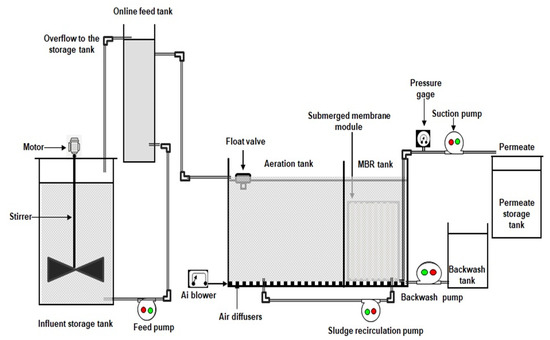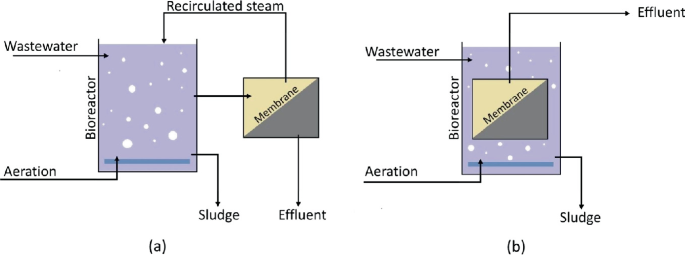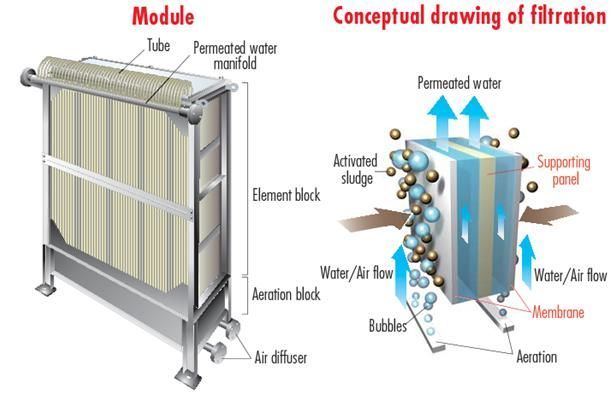Troubleshooting Common Issues with Membrane Bioreactor Systems
Troubleshooting Common Issues with Membrane Bioreactor Systems
Blog Article
Membrane Bioreactors Discussed: Reliable Solutions for Clean Water
Membrane bioreactors (MBRs) have arised as an innovative solution for dealing with journalism obstacles of wastewater therapy. By incorporating organic processes with advanced membrane filtering, MBRs not only improve the high quality of treated water but likewise decrease the spatial needs of therapy centers. As ecological issues intensify, the role of MBR innovation in advertising lasting water administration comes to be progressively substantial. Nonetheless, the intricacies of their procedure, benefits, and prospective applications merit a closer evaluation to completely comprehend their effect on the future of water treatment.

What Are Membrane Layer Bioreactors?
Membrane bioreactors (MBRs) are advanced wastewater treatment systems that incorporate biological degradation procedures with membrane layer purification modern technology. This assimilation enables the reliable elimination of contaminants from water, making MBRs a preferred selection in numerous applications, consisting of local wastewater treatment and commercial effluent monitoring.

One of the crucial benefits of MBRs is their capacity to create high-quality effluent, often suitable for reuse in watering or commercial processes. Additionally, MBRs require a smaller sized impact contrasted to traditional therapy systems, making them ideal for metropolitan setups where space might be restricted.
In addition, MBRs can efficiently take care of varying influent tons and are much less susceptible to the results of poisonous shocks. These attributes add to their growing appeal as a lasting service for dealing with the boosting need for tidy water while lessening ecological impacts.
Exactly How Membrane Layer Bioreactors Work
While the procedure of membrane bioreactors (MBRs) may seem complicated, it essentially rotates around the synergy between organic processes and membrane filtration. MBRs integrate an organic treatment procedure, typically triggered sludge, with a membrane layer separation system to deal with wastewater effectively.
In an MBR system, wastewater is very first presented into a bioreactor where microorganisms degrade natural issue and various other pollutants. The organic task lowers the concentration of pollutants while promoting the development of biomass. Following this biological therapy, the combined alcohol goes through membrane layer filtration, which can be microfiltration or ultrafiltration, depending on the wanted effluent quality.
The membranes work as a physical barrier, enabling water and tiny solutes to pass while preserving suspended solids and larger particles. This makes it possible for the system to keep a high focus of biomass within the reactor, enhancing the treatment efficiency.
Moreover, the continuous splitting up of cured water from the biomass assists in a small design and minimizes the impact of the therapy facility. In general, the combination of organic degradation and membrane filtration in MBRs causes trusted and efficient wastewater treatment, ensuring top notch effluent suitable for various applications.
Advantages of MBR Technology
Among the essential advantages of membrane layer bioreactor (MBR) innovation is its ability to generate top notch effluent with a dramatically minimized footprint contrasted to conventional wastewater therapy techniques. MBR systems effectively integrate biological therapy and membrane filtering, resulting in premium removal of impurities, including put on hold solids, pathogens, and raw material. This ability leads to effluent that commonly meets or surpasses stringent regulative requirements for reuse and discharge.
In addition, MBR technology permits for higher biomass concentrations, which boosts the treatment effectiveness and lowers the required activator quantity. This compact style is specifically useful in city areas where area is restricted. The functional flexibility of MBR systems likewise suggests they can adjust to varying influent high qualities and circulation prices, making them suitable for a variety of applications.
Moreover, the decreased sludge manufacturing connected with MBR processes contributes to decrease operational and maintenance prices. The membrane layers serve as a physical barrier, lessening the threat of obstructing and enabling longer operational periods between cleaning. In general, the benefits of MBR modern technology make it an attractive solution for sustainable wastewater treatment, addressing both environmental issues and the requirement for effective resource administration.
Applications of Membrane Bioreactors
With their adaptability and effectiveness, membrane layer bioreactors (MBRs) discover applications across different industries, including community wastewater treatment, industrial procedures, and also water reclamation. In community settings, MBRs offer a compact solution for dealing with wastewater, properly getting rid of impurities while all at once generating high-quality effluent that fulfills rigorous regulative requirements. This makes them particularly suitable for locations with restricted area.
In industrial applications, MBR modern technology is used for treating procedure water, specifically in markets such as food and beverage, drugs, and petrochemicals. These markets benefit from MBRs' capacity to manage high organic tons and their performance in recuperating useful resources from wastewater, such as nutrients and water.
Furthermore, MBRs play an essential duty in water recovery campaigns, allowing the reuse of treated wastewater for irrigation, commercial procedures, or perhaps as potable water after more therapy (Membrane Bioreactor). Their efficiency in getting rid of contaminants and microorganisms makes them a reliable selection for guaranteeing water high quality in various reuse applications
Future of Water Treatment Solutions
The future of water treatment options is poised for transformative innovations driven by technical technology and boosting environmental recognition. As international water scarcity ends up being a pressing issue, brand-new techniques, including membrane bioreactor (MBR) systems, are set to play a crucial function in enhancing the effectiveness and sustainability of water treatment procedures.
Emerging technologies such as man-made intelligence and artificial intelligence are anticipated to Full Article optimize treatment procedures, enabling real-time surveillance and anticipating upkeep. This will certainly boost the overall reliability and performance of water therapy centers. Advancements in membrane products, such as graphene and nanofiltration, guarantee to increase permeation rates and lower fouling, leading to lower energy consumption and functional expenses.
Additionally, the assimilation of renewable energy resources right into water treatment plants will certainly contribute to greener practices. The round economy model will additionally acquire grip, urging the recuperation of valuable resources from wastewater, such as nutrients and power.
Verdict

Membrane layer bioreactors (MBRs) have actually arised as an innovative service for company website attending to the pressing difficulties of wastewater therapy. By integrating organic processes with innovative membrane layer filtration, MBRs not just enhance the top quality of treated water but additionally lower the spatial requirements of therapy centers.One of the crucial advantages of membrane layer bioreactor (MBR) technology is its ability to create high-quality effluent with a significantly decreased footprint compared to traditional wastewater therapy methods.With their convenience and efficiency, membrane layer bioreactors (MBRs) locate applications throughout numerous fields, including metropolitan wastewater therapy, industrial processes, and even water reclamation.In final thought, membrane layer bioreactors stand for a substantial development in wastewater therapy technology, incorporating biological procedures with effective membrane purification to create high-grade effluent.
Report this page